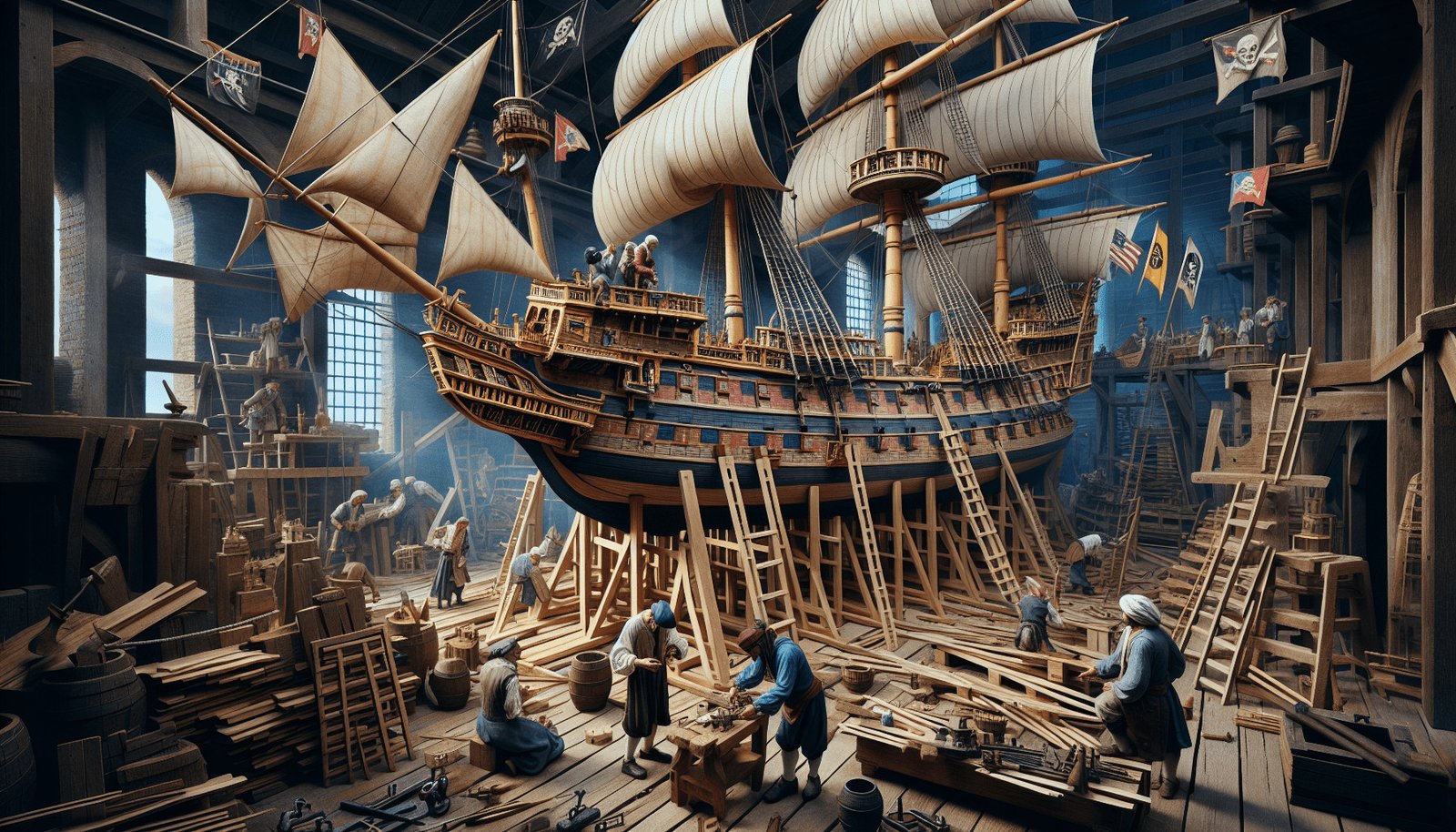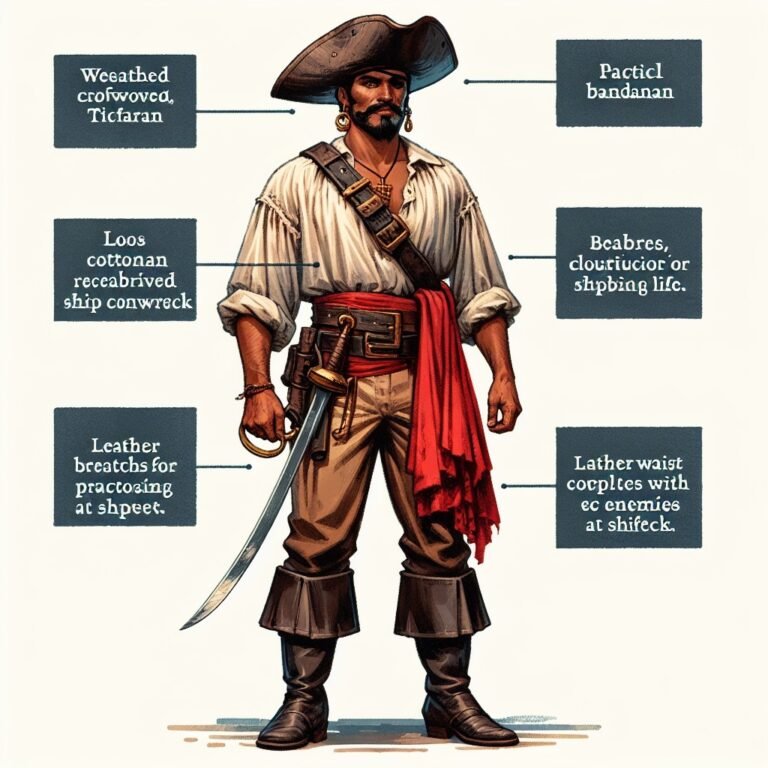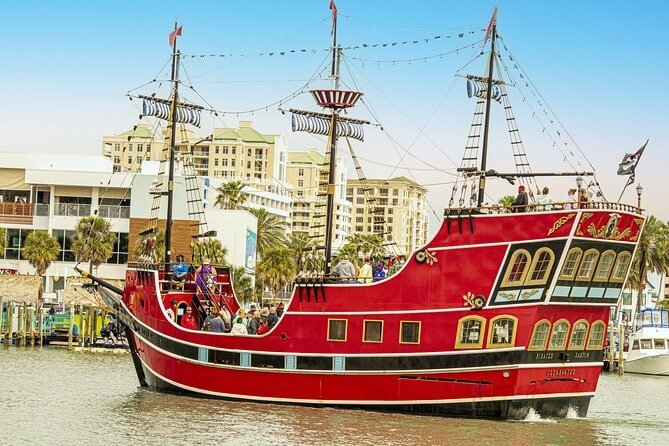Ever wondered how you’d fare as a pirate shipwright in the 1700s? Picture yourself surrounded by rum-guzzling miscreants with a talent for hoisting the Jolly Roger and an ineffable disdain for personal hygiene. Fun, right? Buckle up, my brave heart, because we’re about to traverse the hilariously mismanaged yet somehow romanticized world of building a pirate ship in the 1700s.
The Burning Question: Why a Pirate Ship
Let’s face it: if you’re reading this, conventional sailing isn’t your jam. The notion of building a pirate ship probably conjures images of thrilling sea chases, hidden treasures, and possibly, Johnny Depp’s eyeliner game. But why a pirate ship, specifically? Because your other option was a sensible life of strolling landlocked town squares and engaging in polite small talk over tea. Blasphemy!
Pirate ships were the epitome of rebellion—a floating middle finger directed at the norms of polite society. They were the ultimate getaway vehicles, a raucous haven for those who found societal rules more constricting than a corset after a ten-course banquet.
Sourcing Your Materials: Trees and Piratical Panache
Step One: Envision a forest. Now, chop it down.
You’re going to need a boatload (pun absolutely intended) of timber. Ideally, you’d want oaks or pines since the sturdiness of your ship could determine whether you’re sailing majestically or imitating an impromptu visit to Davy Jones’s locker.
The Hull: Wood vs. Fashion Sense
Surprisingly, an 18th-century pirate ship’s hull has more in common with your grandmother’s armchair than you’d think. It’s all about the jointing and planking. You’ll need sturdy planks, typically 2-3 inches thick. Most of these hull parts are held together by wooden pegs, also known as treenails—though I like to call them ‘nautical dowels of desperation.’
Fun Fact: You want a hull that’s as watertight as a nun’s alibi. That means agglomerating pitch, tar, and other sticky substances that are also great for Pharaoh’s baby-proofers. You’ll have yourself an almost-solid, waterproof boat, provided you’re sober enough to notice a leak.
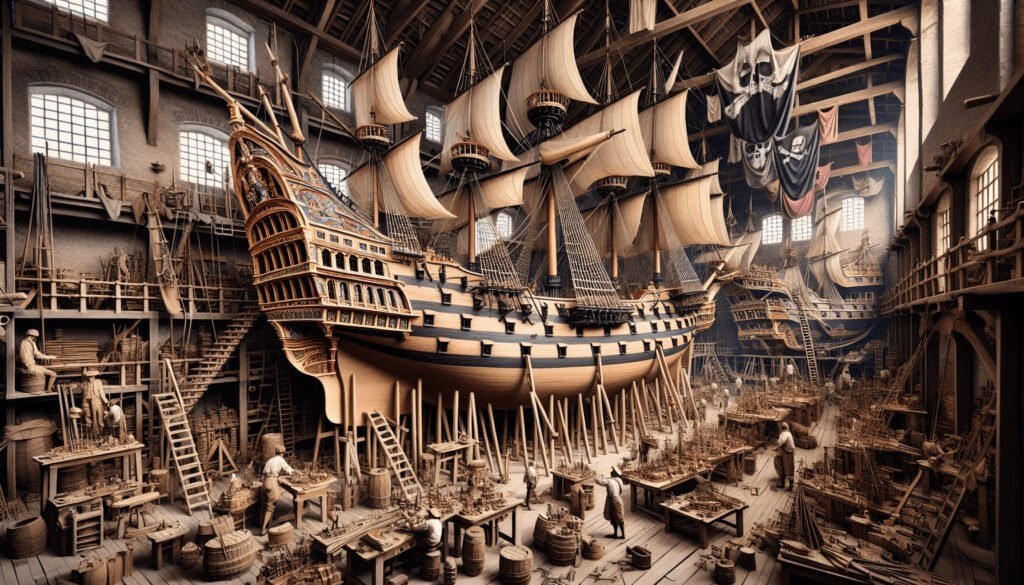
Labor: Who’s Doing the Heavy Lifting
Finding Your Crew: The Motley Motley
Let’s face it—you’re not getting the crème de la crème of shipbuilders. Pirates aren’t exactly headhunted from the local vocational school. Instead, you’ve got roguish souls who stumbled upon a life of crime because their charm was insufficient for a more respectable uselessness (looking at you, Cousin Larry).
Recipe for a Typical Crew Member:
1 part ex-convict
2 parts runaway slave
A pinch of disgruntled sailor
3 parts molasses if you want them sweet in the mornings
Division of Labor: Is Anyone Actually Qualified?
Imagine a pinball machine, now replace the pinball with bad decision-making, and you’ve got a fair idea of a pirate ship construction zone. Everyone’s got a role, though none of it necessarily makes sense:
- Shipwright: Attempts to sound knowledgeable by overusing maritime jargon.
- Carpenter: Hits wood with a hammer, occasionally achieving something productive.
- Caulker: Applies pitch and tar and prays fervently it works.
- Blacksmith: No real clue what he’s doing there, but looks menacing swinging a hammer.
The Anatomy of a Pirate Ship: Because Structure Matters
The Hull: Your Watery Coffin
Ah, the hull. This beauty’s gotta be tough as old boots, because this is what’ll keep you from becoming an underwater tourist attraction. Think of the hull as the leather jacket of your pirate ensemble—it’s rugged, essential, and makes a statement.
The Deck: Your Stage for Piratical Shenanigans
The deck isn’t just a flat surface; it’s your battle arena, your dancing stage, and possibly where you’ll collapse after a particularly indulgent night. Be sure to reinforce this sucker because you’ll need it to support the weight of cannon fire, gold hordes, and probably your ego.
Masts and Rigging: Useless Without Emphatic Gestures
Masts are towering spires of timber that hold up the sails, the pirate ship’s equivalent of swanky convertibles. Rigging, on the other hand, is like a Victorian character actress—overly dramatic, visibly stressed, yet inexplicably crucial to the plot.
Important Note: Ensure your ropes are better quality than banter in a Victorian love letter. Subpar rigging can lead to saggy sails and devastated dreams.
Cannons: Because Diplomacy is for Losers
Load up your ship with enough cannon firepower to make a small country uncomfortable. Cannons are to pirate ships what hilariously oversized hams are to medieval feasts—utterly essential.
- Cannonballs: Not as fun as they sound; trust me, “catch” is a terrible game idea.
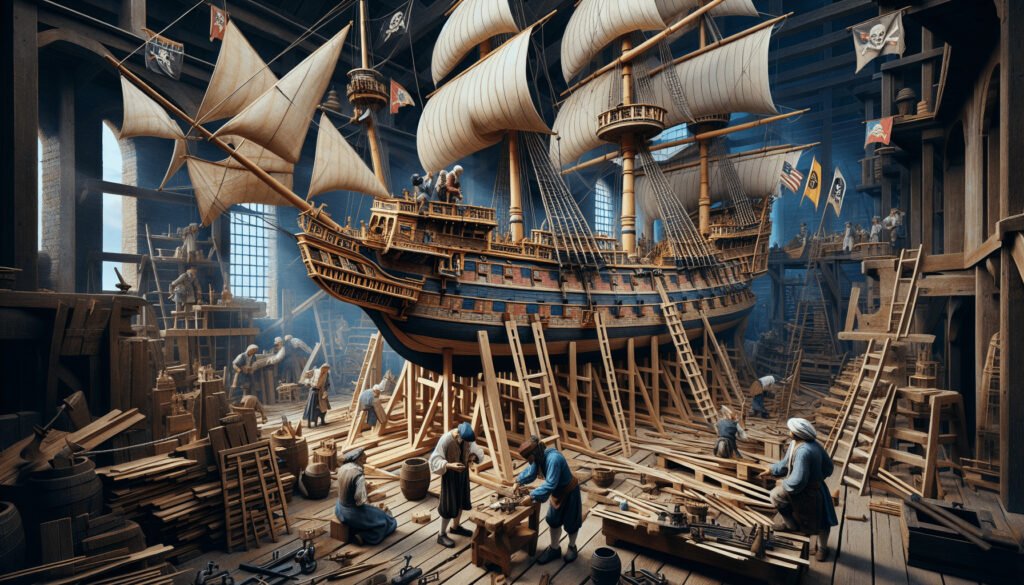
The Build: Sweat, Tears, and Probably Rum
Assembling the Hull: A Jigsaw Puzzle Assembled by Drunk Toddlers
Your first task is connecting wooden planks with treenails in what I refer to as the world’s most challenging and least rewarding jigsaw puzzle. Each piece must fit just right or water will flood in like your aunt’s unsolicited life advice.
Pro Tip: Extra rum rations can motivate your crew to remain coherent and only mildly belligerent.
Installing the Deck: Watch Your Toes!
Next, you’ll install the deck by laying planks and trimming them so they fit snugly. It’s like gigantic, dangerous IKEA furniture, but without the handy-dandy instruction manuals or that strangely satisfying wooden dowel they always throw in.
Caution: Toes will be stubbed. Profanity will be mainstreamed. Family-friendly work environments this is not.
Masts, Sails, and Rigging: Organized Chaos
Raising the masts is particularly dramatic, usually involving lots of yelling, waving of arms, and clumsy heroism. Imagine raising children, but less expensive and more rewarding.
Rigging: Lash ropes furiously, feigning an understanding of basic knot-tying. Remember to shout terms like ‘belay’ and ‘hoist,’ which will confuse the crew just enough to make them assume you know what you’re doing.
Pirate Life: Once the Ship’s Ready
Setting Sail: Navigating Toward Catastrophe
You’ve built the ship and it miraculously floats—hooray! Now comes the part where you awkwardly pretend to know navigation. Pirates used charts, compasses, and, often, sheer dumb luck. Remember, there’s a fine line between ‘adventure’ and ‘disaster,’ and you’re pole-vaulting across it.
The Code: Rules for The Unruly
Yes, pirates had a code—a pseudo-democratic, somewhat chaotic set of rules everyone abided by. Treat it like your ship’s constitution, but allow amendments such as “no stealing rum rations” and “no excessive plundering on Sundays.”
Key Clauses:
- Equal Share: Plunder was shared more or less equally, because piratical socialism is a thing.
- Mutiny: Acknowledged but frowned upon. Think of it as a passive-aggressive corporate restructuring.
- Marooning: The preferred method of firing someone, literally. Disappointing crewmates got dumped on deserted islands.
The Daily Grind: Softly Piratical Mundanity
Between raiding and evading the law, pirate life involved dealing with poor hygiene, the everlasting stench of barrel-aged mildew, and a diet only varied by how much one enjoys (or endures) ship biscuits crawling with weevils.
The Highs and Lows: Between Glory and Oblivion
The life of a pirate ship and its crew is a beautifully chaotic blend of euphoric highs and soul-crushing lows. One moment you’re basking in the glow of a successful raid, the next you’re fending off Royal Navy ships wondering if you should have chosen to open a nice, quiet bakery instead.
The Legacy: Myth Vs. Reality
Forget those high-seas novels that romanticize piracy. Pirate ships are troublesome, filthy contraptions, often as much a threat to their own crew as they are to their enemies. But in all fairness, being labeled a ‘scourge of the seas’ isn’t a bad résumé entry.
Conclusion: The Inevitable Farewell
So, you made it! You’ve navigated the salty, treacherous waters of 18th-century pirate shipbuilding and emerged with only mild psychological scarring. But hey, it’s not all for naught. Despite the poorly managed labor, questionable hygiene, and a virtually guaranteed death by cannonball, you’ve built yourself one impressive floating rebellion.
Stay rebellious, continue questioning normality, and remember: If your pirate ship starts to sink, it’s always the carpenter’s fault.
